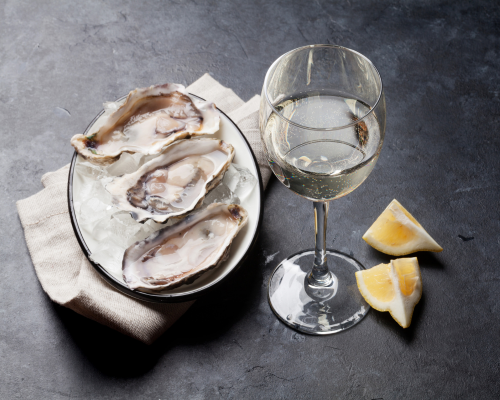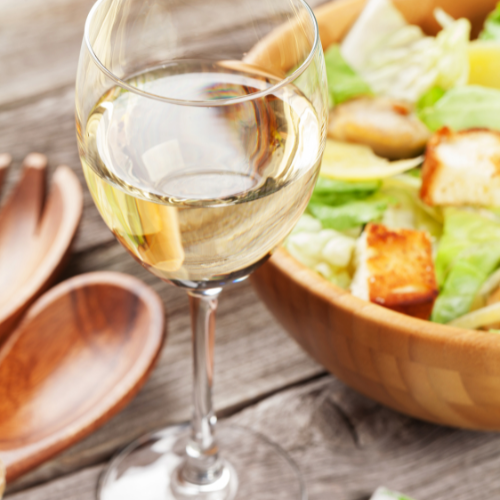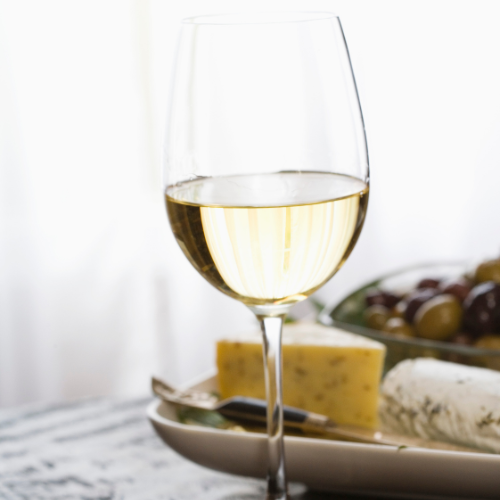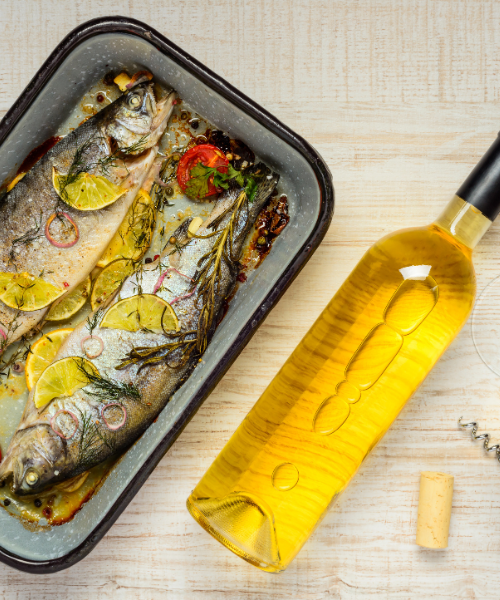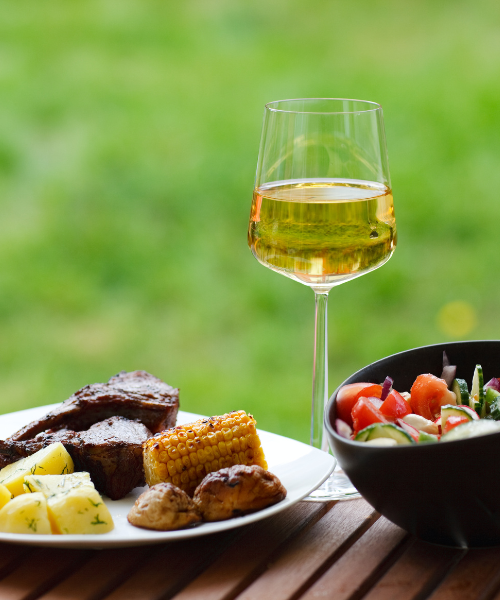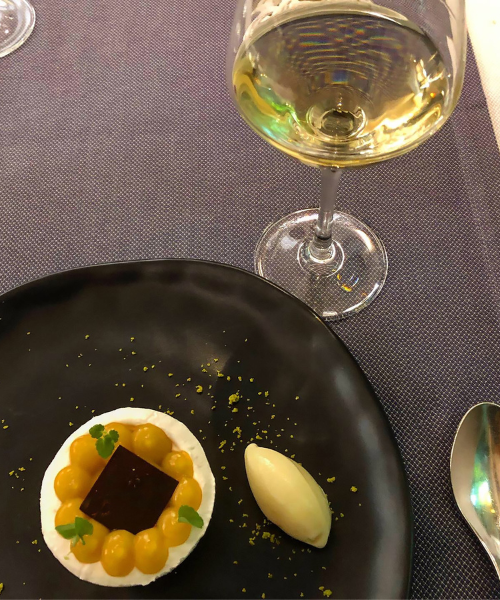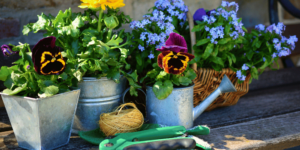5 highlights for your outdoor area Even if the weather...
Read more...- Jessica Heitz
- No Comments
Harmonious interplay:
Food pairing with white wines from Luxembourg
Which wine goes with which dish? A question that of course does not allow for a simple answer, because the pairing of a wine with a culinary creation is a matter that is as versatile as it is subtle. In short, there are no limits to creativity, but there are some basic rules that should be followed. So if you’re looking for the right wine for your starter, main course or dessert, Letzshop is the place to go, because local vendors offer their local wines here, which are then conveniently delivered to your home.
Elbling – an ancient variety
Elbling is a rather light wine that requires less alcohol. An Elbling can be bone dry or relatively mild. In very good vintages, it develops an amazing fullness and a hint of exoticism. Typical for the variety, however, are aromas of green apple, currants, herbs and lemon. Elbling is an ancient variety, a pleasant wine to drink by the glass if you prefer light, fresh wines.
It is typically drunk with “Friture de la Moselle”, the fried fish that is less compatible with aromatic wines. Elbling also goes well with raw seafood. But also an onion soup, an onion tart and even a green Thai curry go well with Elbling. And of course “Ham, Frites an Zalot”.
Rivaner – the ideal wine “by the glass
There is a misconception that Rivaner is a cross between Riesling and Silvaner. The truth is that Rivaner is nothing other than the Müller-Thurgau variety, which is a cross between Riesling and Madeleine Royale introduced in Switzerland in the 19th century. Unfortunately, the rather early-ripening variety is scorned as inferior, but this is not true, because in good vintages and with consistent harvest reduction, a Rivaner can become amazingly complex.
It tastes of red apple, redcurrant, peach, and has a slight nutmeg and flint note. Its fragrance can be quite floral. Rivaner is the ideal wine by the glass, it goes very well with salads, asparagus, poultry, pork and “charcuterie”, but also with Asian dishes and especially well with sushi and prawns in cocktail sauce. And with a good tarte flambée.
Auxerrois – excellent ageing potential
Auxerrois is a natural cross between Pinot and Heunisch, and is actually the Luxembourg grape variety par excellence, as our Moselle region is one of the main growing areas of this balanced, harmonious and less acidic variety. Auxerrois, like Pinot Blanc, is used as a base variety for Crémant, but it can actually mature wonderfully in the best sites, and if the harvest is curbed, an Auxerrois can become a high-quality Cru. One of the virtues of the variety is its excellent ageing potential.
Its fragrance is reminiscent of nutmeg, honey, melon, it is finely mineral, but can also be surprisingly opulent. Auxerrois is the ideal variety to accompany asparagus, it also goes well with mushroom dishes, white meat, vegetarian dishes such as tofu, potato casserole and also many types of cheese and creamy cream cheese. And with all egg-based dishes, such as omelette or quiche lorraine.
Pinot Blanc – a very diverse, exciting grape variety
Pinot Blanc is a very old variety and popular in many countries. It is used as a base wine for Crémant, mostly in combination with Auxerrois and other varieties. Unfortunately, it is not recognised as a still wine in Luxembourg as it deserves to be, because Pinot Blanc is a very diverse, exciting grape variety that can produce beautiful crus.
Its aroma is mainly characterised by pear and peach, and notes of almond and hazelnut are also often present. When drunk young, it is also characterised by the taste of fresh lemon fruit. It is perfectly suited to ageing in barriques, and can certainly steal the show from Chardonnay. Pinot Blanc goes very well with fish, poultry and veal, and fat barrel-aged crus go well with creamy sauces and even game and lamb – it is an alternative to Pinot Noir if you prefer white wine.
Pinot Gris – an old grape variety that dates back to the Middle Ages
Pinot Gris is a very popular variety that is mainly vinified as a still wine and plays a subordinate role in the production of crémant. Pinot Gris is also an old grape variety that dates back to the Middle Ages. Together with Gewürztraminer, it is the most aromatic variety that is vinified in Luxembourg, but the taste variations are very different depending on whether the variety is vinified dry or with plenty of residual sugar. In any case, it tends to have a high sugar content and often reaches must weights of over 100 degrees.
The taste tends towards juicy yellow and even dried fruits, banana, pineapple, pear, honey, nuts, and often Pinot Gris has a smoky touch. It also develops less acidity than most other varieties. A young Pinot Gris is tangy and fresh, and goes well with marinated fish with a strong sauce, but also with grilled meat. Particularly suitable are pasta with red sauce, Mediterranean dishes such as ratatouille, but also some types of cheese (for example Roquefort) and of course many desserts. And it drinks just like that, as a dessert substitute, for example. An interesting variation is the “Gris de Gris”, which gets its rosé colour from contact with the grape skin. The taste is similar, but the tannins give it a different structure.
Riesling – the king of white wines
Rieslings from the best southern vineyards are complex growths, highly aromatic, mineral and immensely playful – it is a real pleasure to explore the subtle and even exotic notes of a great Riesling. The bouquet has accents of peach, apricot and citrus, and the more concentrated it is – usually when harvested late – the stronger it tastes of fruits like mango, passion fruit and pineapple, and on top of that you often find a honey note.
When vinified very dry, Riesling can seem acidic, because it is in fact the grape variety whose acidity is highest, even if the wine carries a lot of residual sugar. Riesling is also the best interpreter of the soil on which it is grown, because the fine mineral nuances of a terroir come into their own in a good Riesling. A fresh Riesling is a delight to drink as an aperitif, and aficionados leave the Crémant for a top Riesling. It goes excellently with fish dishes and seafood, but also with strong meat dishes and light cream cheese. And a Riesling also goes very well with fruity desserts, especially as a Vendange tardive.
Further articles
Globus Baumarkt: The do-it-yourself giant is new on Letzshop!
Globus Baumarkt: The do-it-yourself giant is new on Letzshop! Letzshop...
Read more...The ultimate guide to choosing your robotic mower: Find the perfect tool with Letzshop
The ultimate guide to choosing your robotic mower: Find the...
Read more...Discover Bosque FeVi croquettes
Discover Bosque FeVi Croquettes: A Spanish Delight in the Heart...
Read more...

